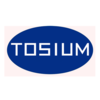軋后超快冷及亞溫淬火對5%Ni鋼微觀組織與低溫韌性的影響機理軋后超快冷及亞溫淬火對5%Ni鋼微觀組織與低溫韌性的影響機理Effects of ultra-fast cooling after hot rolling and lamellarizing on microstructure and cryogenic toughness of 5%Ni steel 采用“控制軋制、軋后超快冷、亞溫淬火+回火(UFC-LT)”工藝制備了5%Ni鋼,系統(tǒng)研究了這一工藝條件下5%Ni鋼的微觀組織與力學(xué)性能,并與常規(guī)調(diào)質(zhì)工藝(QT)和離線淬火、亞溫淬火加回火工藝(QLT)進(jìn)行了對比。結(jié)果表明,經(jīng)UFC-LT工藝處理后,5%Ni鋼的顯微組織由回火馬氏體、臨界鐵素體和5.83%的逆轉(zhuǎn)奧氏體組成,并可以獲得優(yōu)于QT和QLT工藝的強韌性匹配(抗拉強度為608 MPa,屈服強度為491 MPa,-196 ℃時Charpy沖擊功為185 J),韌脆轉(zhuǎn)變溫度由QT工藝的-152 ℃下降到-196 ℃以下。與QT工藝相比,UFC-LT工藝改善韌性的因素主要有滲碳體的溶解、高密度的大角度晶界及5.83%的逆轉(zhuǎn)奧氏體。 In recent years, the demands for liquefied ethylene gas (LEG) are rapidly increased in China. 5%Ni steel is being widely used to build LEG tanks, due to the excellent toughness, high strength and ductility of the material.. Along with the continuous increase in the size of LEG tanks, higher cryogenic toughness has been required for new generation 5%Ni steel. In this work, controlled rolling (CR) has been developed in the aim of microstructure refinement for Ni-containing steels, and ultra-fast cooling (UFC) after hot rolling has been successfully applied to replace on-line direct quenching, which formed the integrated CR-UFC for 5%Ni steel. A new processing technologies, named UFC-LT treatment which consisted of CR-UFC, lamellarizing and tempering has been developed for 5%Ni steel in this study. The microstructure and mechanical properties of 5%Ni steel treated by UFC-LT were investigated, as well as quenching and tempering (QT), quenching, lamellarizing and tempering (QLT) treatments. The results show that the microstructure of UFC-LT steel consisted of tempered martensite, intercritical ferrite and about 5.83% reversed austenite. The reversed austenite has two types of morphologies: one type is acicular reversed austenite which forms along the lath boundaries; another type is block reversed austenite which mainly forms at prior austenite gain boundaries. An optimum combination of strength and toughness were obtained by UFC-LT treatment (ultimate tensile strength is 608 MPa; yield strength is 491 MPa; elongation is 34%; Charpy impact energy at -196 ℃ is 185 J). The ductile-brittle transition temperature of the steel treated by QT and UFC-LT heat treatments were -152 ℃ and lower than -196 ℃, respectively. The superior cryogenic toughness compared to QT treatment contributed to the dissolution of cementite, high percentage of large angle grain boundaries and the formation of 5.83% reversed austenite. 全文下載:http://pan.baidu.com/s/1kVbqBVh
|







